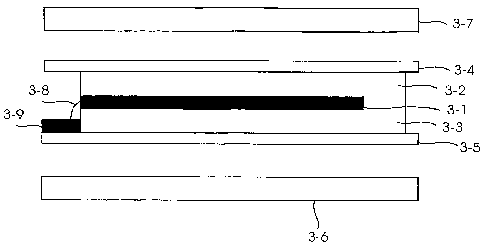Some of the information on this Web page has been provided by external sources. The Government of Canada is not responsible for the accuracy, reliability or currency of the information supplied by external sources. Users wishing to rely upon this information should consult directly with the source of the information. Content provided by external sources is not subject to official languages, privacy and accessibility requirements.
Any discrepancies in the text and image of the Claims and Abstract are due to differing posting times. Text of the Claims and Abstract are posted:
| (12) Patent Application: | (11) CA 2626582 |
|---|---|
| (54) English Title: | ANTENNA ARRANGEMENT |
| (54) French Title: | AGENCEMENT D'ANTENNE |
| Status: | Deemed Abandoned and Beyond the Period of Reinstatement - Pending Response to Notice of Disregarded Communication |
| (51) International Patent Classification (IPC): |
|
|---|---|
| (72) Inventors : |
|
| (73) Owners : |
|
| (71) Applicants : |
|
| (74) Agent: | MBM INTELLECTUAL PROPERTY AGENCY |
| (74) Associate agent: | |
| (45) Issued: | |
| (86) PCT Filing Date: | 2006-10-18 |
| (87) Open to Public Inspection: | 2007-04-26 |
| Examination requested: | 2010-09-07 |
| Availability of licence: | N/A |
| Dedicated to the Public: | N/A |
| (25) Language of filing: | English |
| Patent Cooperation Treaty (PCT): | Yes |
|---|---|
| (86) PCT Filing Number: | PCT/FI2006/050448 |
| (87) International Publication Number: | WO 2007045725 |
| (85) National Entry: | 2008-04-18 |
| (30) Application Priority Data: | ||||||
|---|---|---|---|---|---|---|
|
The invention relates to an antenna (2-10) for use in a mobile device (1 -1).
The antenna (2-10) comprises means for receiving (2-5, 3-1 , 4-1 , 5-1 , 6-5)
a signal from a satellite positioning system; a first layer of dielectric
material (2-4a, 2-4b, 3-2, 3-3, 4-2, 4-3, 5-2, 5-3, 6-4, 6-15) an a second
layer of dielectric material (2-4a, 2-4b, 3-2, 3-3, 4-2, 4-3, 5-2, 5-3, 6-4, 6-
15), wherein the means for receiving (2-5, 3-1, 4-1, 5-1, 6-5, 7-6) the signal
is at least partly between the first dielectric layer (2-4a, 2-4b, 3-2, 3-3, 4-
2, 4-3, 5-2, 5-3, 6-4, 6-15) and the second dielectric layer (2-4a, 2-4b, 3-2,
3-3, 4-2, 4-3, 5-2, 5-3, 6-4, 6-15).
La présente invention se rapporte à une antenne (2-20) destinée à être utilisée dans un dispositif mobile (1-1). L'antenne (2-10) selon l'invention comprend : un moyen (2-5, 3-1, 4-1, 5-1, 6-5) permettant de recevoir un signal émis par un système de positionnement par satellite ; une première couche d'une matière diélectrique (2-4a, 2-4b, 3-2, 3-3, 5-2, 4-3, 5-2, 5-3, 6-4, 6-15) ; et une seconde couche d'une matière diélectrique (2-4a, 2-4b, 3-2, 3-3, 5- 2, 4-3, 5-2, 5-3, 6-4, 6-15). Ledit moyen (2-5, 3-1, 4-1, 5-1, 6-5, 7-6) permettant de recevoir le signal est placé au moins partiellement signal entre la première couche diélectrique (2-4a, 2-4b, 3-2, 3-3, 5-2, 4-3, 5-2, 5-3, 6-4, 6-15) et la seconde couche diélectrique (2- 4a, 2-4b, 3-2, 3-3, 5-2, 4-3, 5-2, 5-3, 6-4, 6-15).
Note: Claims are shown in the official language in which they were submitted.
Note: Descriptions are shown in the official language in which they were submitted.

2024-08-01:As part of the Next Generation Patents (NGP) transition, the Canadian Patents Database (CPD) now contains a more detailed Event History, which replicates the Event Log of our new back-office solution.
Please note that "Inactive:" events refers to events no longer in use in our new back-office solution.
For a clearer understanding of the status of the application/patent presented on this page, the site Disclaimer , as well as the definitions for Patent , Event History , Maintenance Fee and Payment History should be consulted.
| Description | Date |
|---|---|
| Time Limit for Reversal Expired | 2012-10-18 |
| Application Not Reinstated by Deadline | 2012-10-18 |
| Deemed Abandoned - Failure to Respond to Maintenance Fee Notice | 2011-10-18 |
| Letter Sent | 2010-09-20 |
| Request for Examination Requirements Determined Compliant | 2010-09-07 |
| All Requirements for Examination Determined Compliant | 2010-09-07 |
| Request for Examination Received | 2010-09-07 |
| Inactive: Office letter | 2009-09-08 |
| Inactive: Office letter | 2009-08-25 |
| Letter Sent | 2009-08-25 |
| Letter Sent | 2009-08-25 |
| Letter Sent | 2009-08-25 |
| Inactive: Single transfer | 2009-07-14 |
| Inactive: Cover page published | 2008-08-21 |
| Inactive: Notice - National entry - No RFE | 2008-08-19 |
| Inactive: First IPC assigned | 2008-05-09 |
| Application Received - PCT | 2008-05-08 |
| Inactive: Declaration of entitlement - Formalities | 2008-04-30 |
| National Entry Requirements Determined Compliant | 2008-04-18 |
| Application Published (Open to Public Inspection) | 2007-04-26 |
| Abandonment Date | Reason | Reinstatement Date |
|---|---|---|
| 2011-10-18 |
The last payment was received on 2010-10-05
Note : If the full payment has not been received on or before the date indicated, a further fee may be required which may be one of the following
Please refer to the CIPO Patent Fees web page to see all current fee amounts.
| Fee Type | Anniversary Year | Due Date | Paid Date |
|---|---|---|---|
| MF (application, 2nd anniv.) - standard | 02 | 2008-10-20 | 2008-04-18 |
| Basic national fee - standard | 2008-04-18 | ||
| Registration of a document | 2009-07-14 | ||
| MF (application, 3rd anniv.) - standard | 03 | 2009-10-19 | 2009-10-08 |
| Request for examination - standard | 2010-09-07 | ||
| MF (application, 4th anniv.) - standard | 04 | 2010-10-18 | 2010-10-05 |
Note: Records showing the ownership history in alphabetical order.
| Current Owners on Record |
|---|
| BLUESKY POSITIONING IPCO S.A.R.L. |
| Past Owners on Record |
|---|
| RISTO KALEVI SAVOLAINEN |